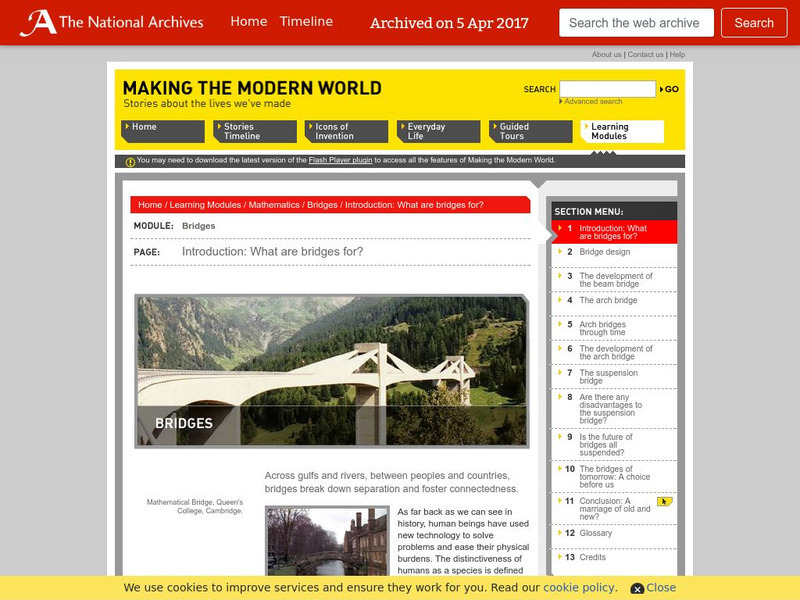DiscoverE
Human Suspension Bridge
When is it okay to be suspended in school? When you're part of a human suspension bridge! Learners first model tension and compression in pairs. Once complete, they get together as a class to model a suspension bridge.
Cornell University
Bridge Building
Bridge the gaps in your knowledge of bridges. Individuals learn about bridge types by building models. The activity introduces beam bridges, arch bridges, truss bridges, and suspension bridges.
Teach Engineering
Bridging the Gaps
The London Bridge should not have fallen down. And here's why. After a brief history of bridges and the three main types, class members are introduce to the concepts of tension and compression, the two main forces acting upon bridges.
Teach Engineering
Bridge Types: Tensile and Compressive Forces
Bridges rely on tension and compression to keep them standing. Pairs test this principle by constructing simple bridges and applying a force to the center. Teams use the provided activity to record their observations of the...
Curated OER
Suspension Bridges
Learners explain the concepts of tension and compression, and then state the purpose of suspension bridges. They also study some of the most famous suspension bridges in North America.
Curated OER
Bridge Building, Tension, and Compression
Students demonstrate tension and compression using real world examples. In this forces lesson, students demonstrate tension on a suspension bridge. They demonstrate compression on different roof designs.
Curated OER
Suspension Bridge Building
Students build a model of a suspension bridge and test the amount of weight it will support. In this engineering lesson, students study types of bridges and attempt to construct a suspension bridge shown in a diagram. They use string and...
Curated OER
Ooblek
Students demonstrate the three states of matter. In this matter lesson, students read Bartholomew and the Ooblek. Students create "ooblek" and discuss what state of matter it is.
Curated OER
Mixtures Lab
High schoolers classify different mixtures. In this mixtures lesson plan, students determine samples to be suspensions, colloids, or solutions and compare homogeneous and heterogeneous mixtures.
Curated OER
Mixing in the Kitchen
Young scholars identify the different types of mixtures. They identify examples of solutions, suspensions, colloidal dispersions, and emulsions through a game and basic experiments.
Curated OER
Solutions, Suspensions, and Colloids
In this solutions, suspension, and colloids worksheet, students answer questions as it relates to their reading information about solutions, suspensions, and colloids. Students observe different examples and complete a chart as they...
Curated OER
Physical Science: Bridge Building
Learners study bridges and design and build their own. They explore different types of bridges and build a basic beam bridge in pairs. After creating their beam bridge, they design a truss bridge and then build a suspension bridge and...
Curated OER
Let's Settle It!
Learners investigate and record data about sedimentation rates. They make a sedimentation bottle using aquarium gravel, sand and potting soil. They discuss the sedimentation rates that they see in their bottles.
Curated OER
Suspension Bridge Construction
Students build a model of a suspension bridge and test the amount of weight it support. They identify different types of bridges: suspension, arch, girder, truss, cantilever, cable-stayed and moveable.
Science Museum, London
Making the Modern World: Bridges
Learn all about bridges in this interactive learning module.
PBS
Pbs Learning Media: Build a Bridge
Survey potential bridge sites, research bridge design, and select the right bridge for the right location in this interactive activity from the NOVA: "Super Bridge" Web site.
PBS
Pbs Teachers: Suspension Bridge
Compare the strength and practical uses of beam bridges and suspension bridges. Investigate how the cable contributes to the stability and strength of a suspension bridge.
















